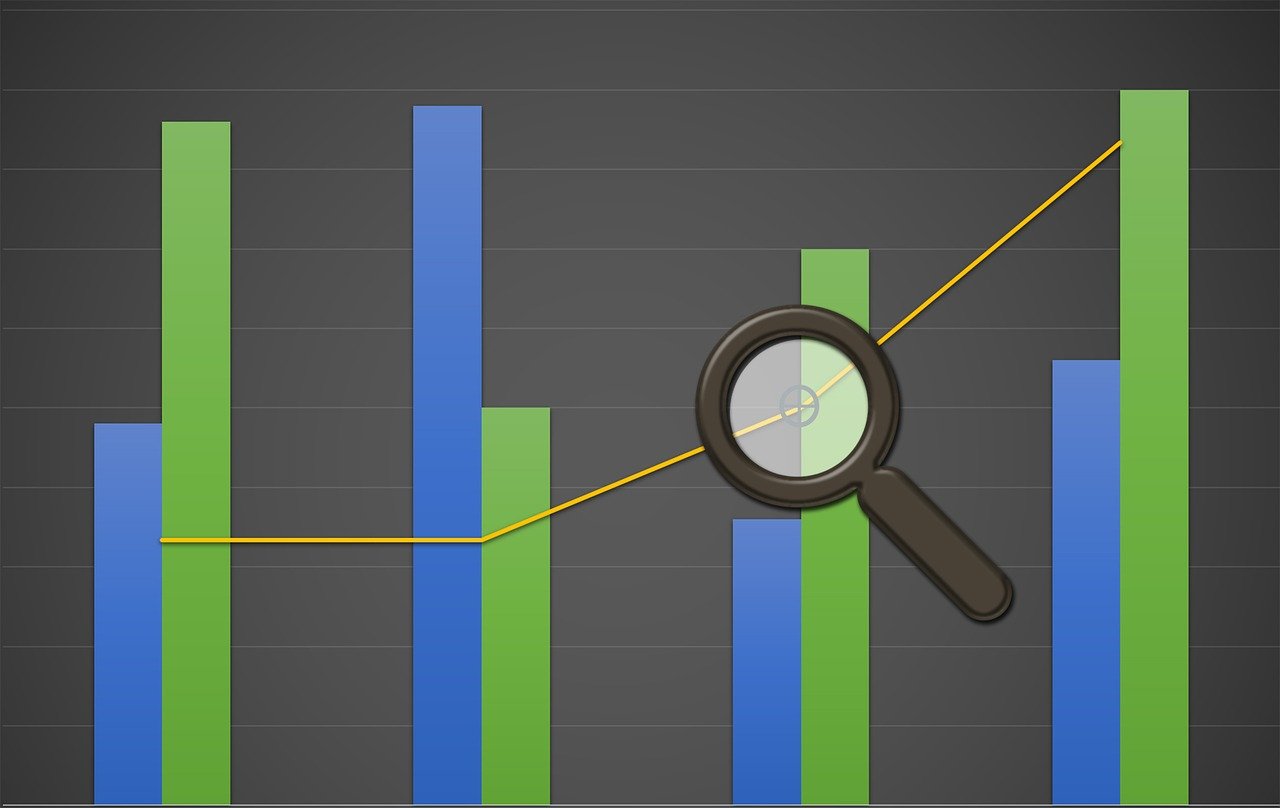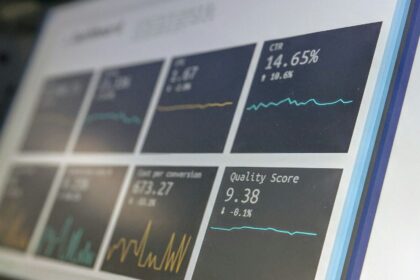Calculate your net position by subtracting total liabilities from all assets. This simple formula provides a clear snapshot of your current economic standing and helps identify areas for improvement. Regularly updating these figures reveals the pace of your monetary growth and highlights which investments or debts have the greatest impact.
Monitor asset accumulation and debt reduction to understand how your personal holdings evolve over time. For instance, increasing property value or retirement savings boosts overall value, while minimizing credit card balances or loans reduces financial burdens. Consistent evaluation encourages disciplined habits that support steady wealth expansion.
Use systematic record-keeping tools such as spreadsheets or dedicated apps to maintain an accurate timeline of your assets and obligations. Visualizing these changes makes it easier to set realistic targets and celebrate milestones, reinforcing motivation throughout your economic journey.
Net Worth Tracking: Measuring Financial Progress
Accurately evaluating one’s financial standing requires systematic accounting of both assets and liabilities. Assets encompass holdings such as cash, investments, property, and cryptocurrency portfolios, while liabilities include debts like loans, mortgages, and credit obligations. The difference between these two categories provides a clear figure reflecting individual or organizational economic status at any given moment.
Regularly updating this balance sheet facilitates the observation of growth trends and helps identify areas requiring adjustment. For example, an increase in asset value combined with stable or decreasing liabilities indicates positive advancement. Conversely, rising obligations without corresponding asset accumulation may signal potential challenges demanding strategic intervention.
Effective Strategies for Asset and Liability Management
Implementing precise monitoring tools is vital to maintain oversight over diversified holdings, especially within volatile markets such as cryptocurrencies. Blockchain explorers and portfolio trackers offer transparent snapshots of digital asset allocations, enabling users to verify balances on-chain without relying solely on third-party services. This verification adds accuracy when calculating total economic standing.
On the liability side, integrating automated reminders for upcoming payments aids in preventing overdue accounts that could negatively impact overall calculations. Furthermore, categorizing debts by interest rates allows prioritization of repayments to optimize cash flow management and accelerate net capital appreciation.
Case studies from investors utilizing multi-asset tracking platforms demonstrate significant improvement in decision-making quality. One example includes a user who combined real estate valuations with crypto holdings tracked through decentralized finance dashboards, achieving a comprehensive view that facilitated timely portfolio rebalancing aligned with market fluctuations.
- Step 1: List all tangible and intangible assets including bank accounts, stocks, bonds, NFTs, and physical properties.
- Step 2: Document liabilities such as credit card balances, mortgages, personal loans, and pending invoices.
- Step 3: Calculate the differential to determine current standing.
This iterative process supports continuous evaluation of progress toward set goals by revealing patterns in wealth accumulation or decline. It also encourages disciplined saving habits by visualizing how incremental changes influence overall position over time.
The integration of traditional asset classes alongside emerging digital assets demands adaptable methods capable of encompassing diverse valuation metrics. By maintaining diligent records and leveraging advanced analytics tools tailored for multi-layered portfolios, individuals can foster informed decisions supporting sustained enhancement of their monetary foundation.
Calculating Net Worth Components
Accurately assessing your total holdings begins with categorizing all possessions and liabilities into clear groups. These include tangible assets such as real estate, vehicles, and physical valuables, alongside intangible ones like stocks, bonds, and cryptocurrencies. On the opposite side, debts such as mortgages, loans, and credit card balances must be subtracted to reveal the true financial standing. Establishing this framework allows for systematic evaluation of each component’s current value.
For digital assets like cryptocurrencies, valuation requires referencing reliable market data due to price volatility. Tools that aggregate exchange rates across platforms help consolidate balances into a single currency equivalent. For example, holding 2 Bitcoin and 10 Ethereum necessitates converting these figures using up-to-date prices from sources like CoinMarketCap or Binance API endpoints. This ensures an accurate representation of portfolio magnitude at any given moment.
Steps to Quantify Asset Values
First, compile a comprehensive list of all owned items with assignable monetary values. Real estate can be appraised based on recent sales in the vicinity or professional assessments. Liquid investments such as stocks are straightforward by multiplying share quantity by current market price. Personal possessions might require approximate valuations if no formal appraisal exists.
- Tangible Assets: Real estate market estimates, vehicle depreciation tables
- Financial Instruments: Stock exchange quotes, bond yield calculators
- Cryptocurrencies: Aggregated exchange rates updated frequently
The next step involves calculating outstanding obligations to subtract from total assets. Include principal amounts on loans, remaining credit card balances, and any other recurring liabilities. Careful documentation here prevents overestimation of one’s overall financial condition.
A practical approach includes periodic re-evaluation intervals – monthly or quarterly depending on asset volatility – to observe growth trends objectively. Particularly for volatile assets like cryptocurrencies or equities exposed to market fluctuations, frequent updates provide clarity regarding actual gains or losses over time.
This methodical calculation not only clarifies one’s asset base but also highlights potential areas needing attention or adjustment in allocation strategies. Recognizing which components contribute most significantly to overall accumulation enables informed decision-making aimed at sustainable enhancement of economic position.
Choosing Tracking Tools
Selecting an appropriate platform for monitoring your asset accumulation and obligations requires a clear understanding of the specific data points it can handle. Tools that support comprehensive input of diverse assets, including cryptocurrencies, stocks, real estate, and liabilities such as loans or credit card debts, provide a more accurate reflection of your overall financial condition. For instance, platforms like CoinTracker and Kubera offer detailed integration with blockchain wallets and traditional accounts, allowing users to consolidate all holdings in one place.
Accuracy in calculating the difference between total possessions and outstanding debts is critical for observing growth over time. Many applications now use API connections to fetch real-time valuations from exchanges and financial institutions, reducing manual input errors. A case study involving Delta Investment Tracker demonstrated how automated updates increased user confidence in their portfolio’s actual value by 30%, compared to manual spreadsheets prone to outdated pricing.
Key Features to Prioritize
When evaluating tools designed to chart your asset evolution against liabilities, consider functionality such as multi-currency support, historical performance graphs, and customizable categories. These features enable users to identify trends in accumulation or depletion clearly. For example:
- Multi-asset synchronization: Ability to link various accounts spanning crypto wallets (Ethereum, Bitcoin), traditional banking institutions, and real estate portfolios.
- Liability tracking: Capability to log mortgages, personal loans, or credit lines with scheduled repayments reflected automatically.
- Data export and privacy controls: Options for encrypted backups and exporting reports for tax or advisory purposes.
Platforms like Personal Capital excel in combining these aspects but might lack deep blockchain-specific features; conversely, Zapper.fi integrates DeFi assets efficiently but may require supplementary software for full liability management.
User Experience and Security Considerations
The interface usability influences consistent data entry and review routines that underpin reliable assessment of financial trajectory. Tools offering intuitive dashboards with visual cues–such as pie charts illustrating asset allocation versus debt distribution–help maintain engagement without overwhelming novices. Moreover, security remains paramount; solutions employing two-factor authentication (2FA) alongside end-to-end encryption safeguard sensitive information from unauthorized access.
The choice depends on balancing the complexity of your holdings with ease of use while ensuring robust security frameworks are not compromised. Trial periods or demo versions can help determine which tool aligns best with your requirements for observing monetary advancement through the interplay of possessions and obligations.
Interpreting Net Worth Changes
Examining shifts in an individual’s total value involves comparing the sum of their owned assets against outstanding liabilities. This approach offers a clear snapshot of economic standing by accounting for all holdings–ranging from cash, investments, real estate, to cryptocurrencies–and subtracting debts such as loans or credit obligations. When observing growth or decline, it is critical to assess fluctuations in both categories rather than focusing on asset appreciation alone.
For example, a sudden increase in cryptocurrency holdings might suggest positive development; however, if accompanied by rising liabilities like margin debt or unpaid bills, the overall figure could remain stagnant or even decrease. Thus, continuous observation ensures that gains are sustainable and not overshadowed by accumulating obligations.
Key Factors Influencing Asset Valuation and Liability Impact
Valuing digital assets demands precision due to their volatility. Market prices can shift within minutes, affecting total calculations significantly. Employing reliable data feeds and timestamps during evaluation helps maintain accuracy. Conversely, fixed liabilities such as mortgages provide stability but require regular updates reflecting interest changes or principal payments. Tracking these elements systematically reveals true monetary evolution.
Consider a case study where an investor holds Ethereum tokens worth $50,000 and has a loan balance of $30,000. If Ethereum’s price drops by 20%, the token value becomes $40,000 while liabilities remain constant. The net outcome is a $10,000 reduction in personal equity–an essential insight for adjusting investment strategies or budgeting.
- Asset diversification: Holding multiple types of property–including traditional stocks and digital currencies–can mitigate risk during market downturns.
- Liability management: Prioritizing debt repayment improves overall stability and increases future flexibility.
- Periodic reassessment: Frequent reviews capture short-term changes before they impact long-term goals negatively.
A practical technique involves recording all possessions and debts monthly using spreadsheet tools integrated with financial APIs. This creates historical records that highlight trends enabling better forecasting decisions based on empirical evidence rather than guesswork.
The table illustrates how gains in asset value combined with reduced liabilities lead to improved personal equity. Notably, even when asset values dipped between February and March, decreasing debts cushioned the adverse effect on total standing.
Avoid interpreting isolated numbers without context: temporary market swings often reverse rapidly especially in decentralized finance environments. Instead, focus on patterns over several months to evaluate genuine advancement toward economic aspirations confidently. Such disciplined scrutiny aids newcomers and seasoned participants alike in making informed choices aligned with their objectives.
Setting Improvement Goals
Establish clear targets for asset accumulation by segmenting holdings into liquid, semi-liquid, and long-term categories. This approach simplifies the evaluation of portfolio expansion and exposes areas where capital can be reallocated to optimize overall asset value.
Utilize blockchain analytics tools to quantify growth patterns within cryptocurrency portfolios, enabling precise evaluation of investment performance beyond conventional fiat metrics. Analyzing on-chain data offers granular insights into token velocity and staking yields, which contribute directly to the amplification of personal holdings.
Strategic Recommendations for Enhanced Asset Evaluation
- Implement periodic snapshots: Capture asset states at fixed intervals using decentralized ledger records to maintain an immutable timeline of financial evolution.
- Diversify asset classes: Include NFTs, DeFi positions, and stablecoins alongside traditional crypto holdings to create a multi-dimensional view of resource accumulation.
- Leverage automated tracking solutions: Integrate APIs from wallets and exchanges for real-time updates that reflect instantaneous fluctuations in portfolio composition.
Technological advances anticipate integration of AI-powered predictive analytics that will refine goal-setting by modeling probable asset trajectories under varying market conditions. This progression enhances decision-making precision while reducing exposure to volatility risks.
The continual refinement of quantification methods for portfolio augmentation not only promotes disciplined capital management but also fosters resilience against systemic shocks. As these methodologies mature, individuals will gain unprecedented control over their wealth-building endeavors through transparent and data-driven frameworks.





